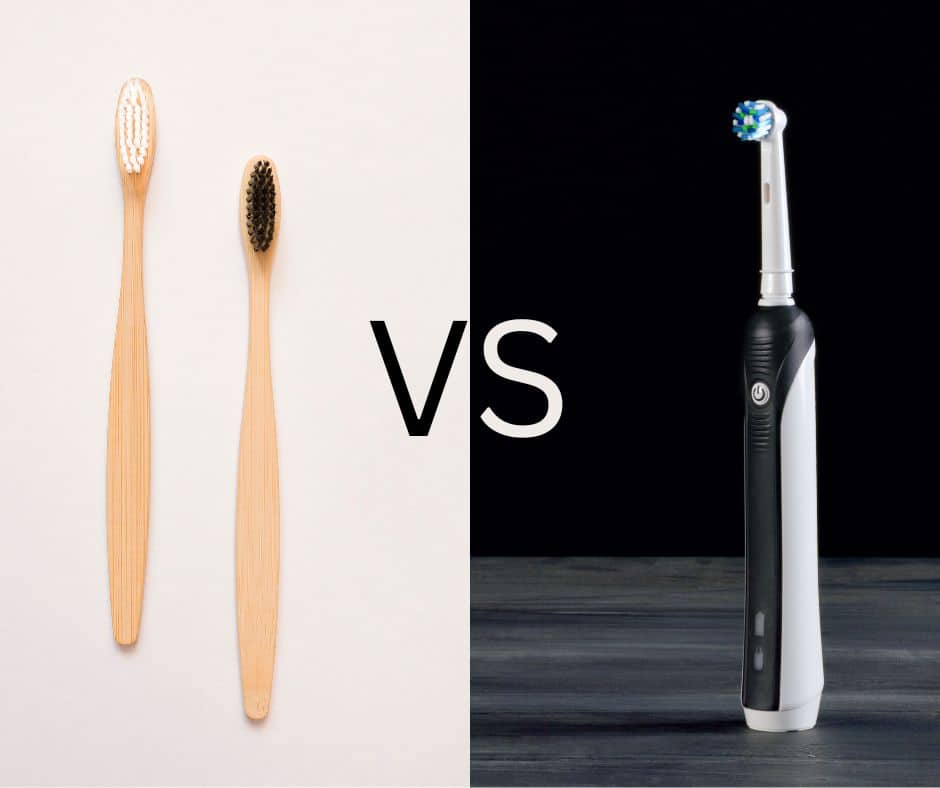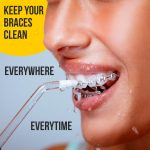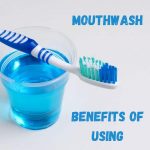Electric toothbrushes are better at cleaning teeth than manual toothbrushes because they move faster and have the ability to apply more pressure than manual toothbrushes, which means they are more effective at removing plaque. For example, researchers at the Angle Orthodontist (opens in new tab) journal found that oscillating-rotating toothbrushes were more effective at removing plaque and reducing decay than sonic toothbrushes for patients with fixed braces.
What is an Electric Toothbrush?
The electric toothbrush is a more sophisticated version of the manual toothbrush. It has an electric motor that rotates the brush head, which moves back and forth or in a circular motion to clean the teeth.
Electric toothbrushes can be used to replace manual brushing. Some may also have a built-in timer and a pressure sensor. This is done so that the toothbrush will switch off automatically once the user has brushed long enough and vigorously enough to clean their teeth properly. Powered toothbrushes are available for both adults and children.
What to look for in a manual toothbrush?
Manual toothbrushes can typically be cheaper than electric toothbrushes, but studies show that the products aren’t as effective in preventing the spread of plaque or gingivitis. It is advisable to buy a hand toothbrush with a small head, so the back of your teeth can reach the back. You want soft bristles, but not hard. A brittle toothbrush can damage teeth and limbs.
How to choose the manual toothbrush?
You should also consider the type of toothbrush that you use. The type of toothbrush that you use depends on how often you brush your teeth. For example, if you use a regular toothbrush with a bristled head, then it’s important that it be soft and non-irritating so that it doesn’t hurt your gums.
If you use a soft-bristled head, then it must be firm enough to keep your teeth from hurting during brushing. Finally, ensure that the brush has the proper size bristles for each mouth size and shape. If too many bristles are in one brush section, they will dig into the gums and cause discomfort or infection.
Actually, you can be content with a manual toothbrush if you are not lazy to clean your teeth thoroughly. When used correctly, you are able to reach out cavities between teeth.
How to clean your teeth correctly?
To clean teeth correctly, use a pea-sized amount of toothpaste on your toothbrush. Aim the toothbrush at a 45-degree angle towards the gum line and use gentle circular motions. Be sure to brush on the inside surfaces of your teeth and to use a light back-and-forth motion on the chewing surfaces of your molars. Spit the toothpaste out after brushing.
What to look for in an electric toothbrush?
The electric toothbrush range includes wide varieties. There are only very small randomized clinical trials of electric toothbrushes compared to those whose manufacturers do not endorse their products. Cram suggests sonic tooth brushing. The bristle gets deeper between teeth, inside the tight spaces and underneath the ridge of the gum tissue surrounding each tooth.
What are the advantages of using an electric toothbrush?
Recharging electrical toothbrushes (or powered toothbrushes) have a better surface area and fewer contaminants than normal manual toothbrushes. Many users prefer using electric toothbrushes to using manual toothbrushes. With various options available, you have plenty of choices for an ideal mouthwash. Superior Plaques Removal.
Electric toothbrushes have a better surface area and fewer contaminants than manual toothbrushes, which is why we recommend this method for superior plaque removal.
Stain Removal – electric toothbrushes remove stains more effectively than manual brushes due to their increased power keeping your teeth and gums as healthy as possible.
How to Choose the Best Electric Toothbrush for You?
The first thing you should do when choosing an electric toothbrush is to determine your needs.
- Do you want a rechargeable toothbrush or a battery-operated toothbrush?
- Do you have sensitive teeth, or do you have braces?
- What kind of bristles do you prefer?
Many factors go into choosing an electric toothbrush, but these questions will help narrow down your choices. There are many options if you are in the market for a battery-operated toothbrush. Some models have a timer that will not turn off until your teeth have been brushed for two minutes.
If you have sensitive teeth, this is an important feature because it ensures that every part of your mouth has been brushed. It would help if you also looked at the bristles on the brush head when selecting a battery-operated toothbrush. The bristles should be soft enough to prevent.
You will change throughout your life, depending on whether you are undergoing dental treatment at any given time. So, the first step is breaking down toothbrush options depending on your age group.
Research published in the International Journal of Pediatric Dentistry (opens in new tab) found that electric toothbrushes were the best option for children who have their teeth brushed by a parent or were independent enough to brush their teeth effectively on their own. Dentists surveyed by the American Academy of Pediatric Dentistry (opens in new tab) advise that a dentist should treat your child from that age.
Manual or electric?
While manual and electric toothbrushes are effective at cleaning teeth, manual toothbrushes are better for those who are diligent about brushing their teeth twice daily for at least 3 minutes. Electric toothbrushes are better for those who are lazy about brushing their teeth, as they are more likely to get a thorough cleaning and whitening from an electric toothbrush.
You can use an electric toothbrush to deep polish back teeth and for places when it is hard to reach. The manual toothbrush is great for cleaning between teeth.
The best way is to combine both brushes together to achieve the best dental health.
Pros & cons of electric toothbrushes
The electric toothbrush is considered the best option to maintain healthy mouths over manual brushing machines. The pros and cons of buying dental treatment are advisable.
Pros:
- The electric toothbrush is more efficient in removing plaque and bacteria than manual brushing.
- It is easier to reach all areas of the mouth with an electric brush.
- Electric toothbrushes can be more gentle on the gums.
Cons:
- Electric toothbrushes can be more expensive than manual toothbrushes.
- They require batteries or charging.
- Some people may find them difficult to use.
Why is an electric toothbrush better than a manual?
It helps to reduce plaque and gingivitis more easily. The study showed that those using an electric toothbrush had better oral health, including reduced tooth loss, than those with a manual brush. The results were compiled in a 2014 study that showed electric toothbrushes were more effective at preventing gingivitis long-term versus traditional toothbrushes. Researchers found 11% reduced plaque short-term and 21% decreased long-term compared with toothbrush manuals. The gums are healthy for braces patients.
Using a manual toothbrush may brush too hard, damaging your gums and teeth and possibly resulting in cavities and tooth decay.
How often should you brush your teeth and gums?
Brushing your teeth twice a day with toothpaste is the best way to keep your teeth and gums healthy. What’s more, if you use an electric toothbrush with floss after each other meal, you’ll get so many benefits. How often should you floss to keep your oral hygiene? You can read it in one of our articles.
How often should we replace brush heads?
Even the best quality toothbrushes don’t work for a long time because bacteria accumulate on the bristles in places where the brush is destroyed. Dental professionals recommend making replacements each one-two month of use.
How do electric toothbrushes impact gums healthy?
Dental professionals often recommend electric toothbrushes as they can help to improve gum health. The bristles on an electric brush are able to reach deep into the gum line and remove plaque and bacteria that can cause gum disease. Electric toothbrushes can also help massage the gums and improve blood circulation.





